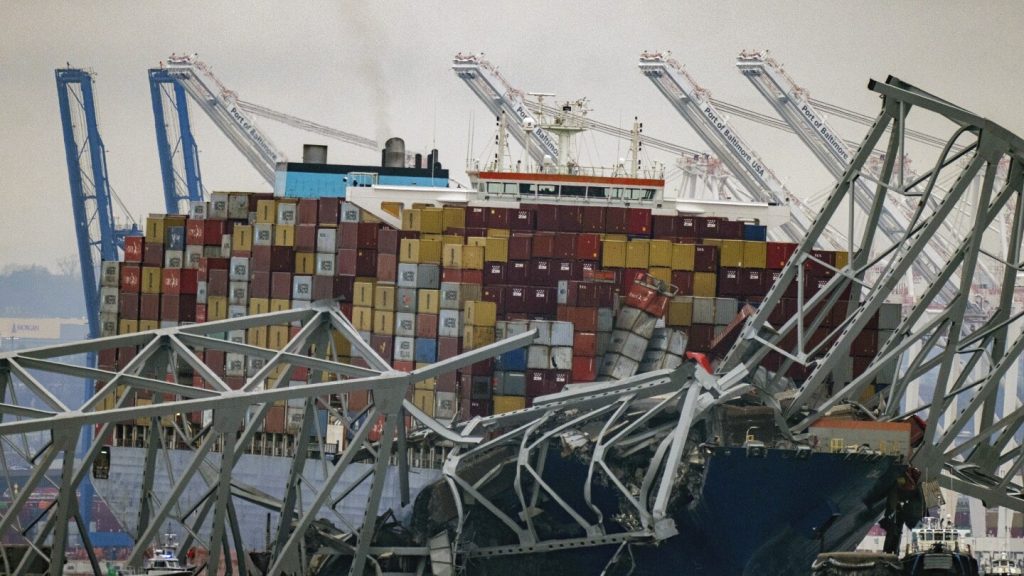The container ship that caused the deadly collapse of Baltimore’s Francis Scott Key Bridge is set to be refloated and moved to a nearby marine terminal. The Dali has been at the collapse site since losing power and crashing into one of the bridge’s supporting columns on March 26, resulting in the deaths of six construction workers and disrupting traffic into Baltimore Harbor. The refloating and transit work on the ship are scheduled to begin on Monday morning during high tide, with up to five tugboats assisting the Dali on its 2.5-mile journey to the marine terminal. The operation is expected to take at least 21 hours to complete.
A controlled demolition was performed on May 13 to dismantle the largest remaining span of the collapsed bridge. The Dali experienced four electrical blackouts within a span of about 10 hours before departing from the Port of Baltimore to head to Sri Lanka, ultimately leading to the collision with the bridge. The National Transportation Safety Board has issued a preliminary report on the incident, detailing the events that led to the tragic accident.
The Key Bridge Response Unified Command is overseeing the process of refloating and moving the Dali, coordinating the efforts of various teams and ensuring that all safety protocols are followed. The operation involves a detailed plan to carefully navigate the ship to the marine terminal while minimizing the risk of further damage or accidents. The response teams are working diligently to execute the complex operation and ensure that it is carried out efficiently and safely.
The tragic incident involving the collapse of the Francis Scott Key Bridge has prompted a thorough investigation by authorities, with a focus on determining the root causes of the accident and any potential contributing factors. The National Transportation Safety Board’s preliminary report sheds light on the electrical issues that occurred on the Dali prior to the collision, raising questions about the ship’s maintenance and operational procedures. The investigation is ongoing, and further details will likely emerge as more information is gathered and analyzed.
The impact of the bridge collapse extends beyond the loss of life and disruption of traffic in Baltimore Harbor, highlighting the importance of infrastructure safety and maintenance. The incident has sparked discussions about the need for stricter regulations and oversight in the shipping industry to prevent similar accidents in the future. Authorities are considering potential measures to enhance safety standards and ensure that vessels are properly maintained and operated to prevent tragic incidents like the one that occurred with the Dali and the Francis Scott Key Bridge.
As the refloating and transit work on the Dali gets underway, the Key Bridge Response Unified Command is focused on completing the operation successfully and safely, while also addressing the broader implications of the incident. The community is mourning the loss of the construction workers and grappling with the aftermath of the bridge collapse, emphasizing the need for accountability and preventive measures to avoid such tragedies in the future. The efforts to recover and move the Dali signify a step towards closure and resolution, but the impact of the accident will continue to resonate in Baltimore and beyond, serving as a reminder of the importance of vigilance and safety in maritime operations.


